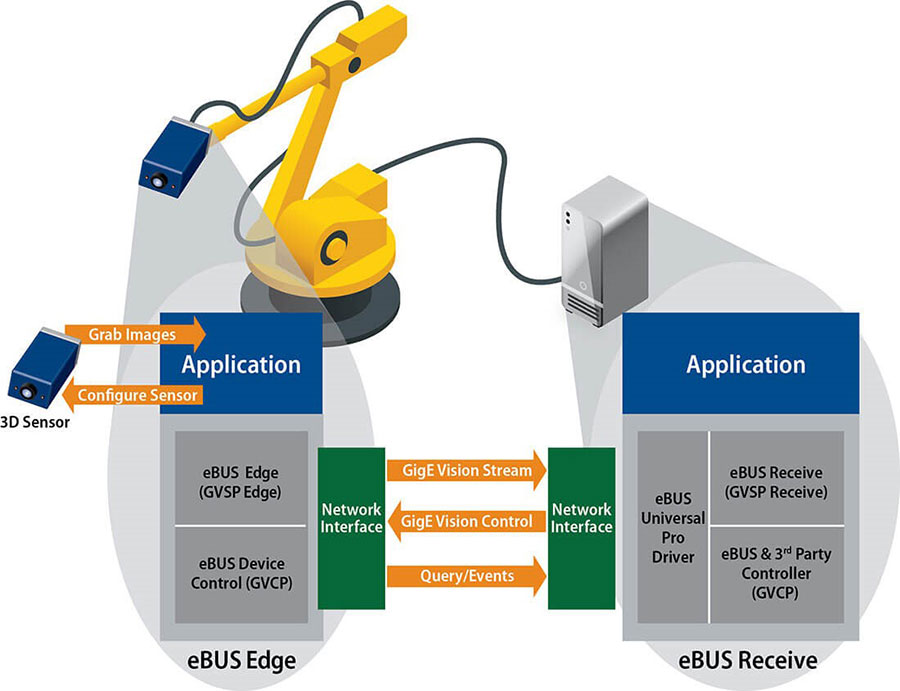Pleora Technologies’ eBUS Edge GigE Vision software transmitter solution help designers meet performance and cost demands as new 3D cameras, sensor-based imaging devices, and embedded and IoT products are deployed in machine vision applications.
 eBUS Edge converts imaging solutions and embedded devices to fully compliant GigE Vision, GenICam devices without investing in any additional hardware. By adding eBUS Edge to a CPU’s software stack, devices support GigE Vision compliant image transmission, can respond to control requests from a host PC, and integrate with off-the-shelf machine vision processing. The GigE Vision software transmitter has been designed into 3D and smart cameras and data transmission systems for medical imaging.
eBUS Edge converts imaging solutions and embedded devices to fully compliant GigE Vision, GenICam devices without investing in any additional hardware. By adding eBUS Edge to a CPU’s software stack, devices support GigE Vision compliant image transmission, can respond to control requests from a host PC, and integrate with off-the-shelf machine vision processing. The GigE Vision software transmitter has been designed into 3D and smart cameras and data transmission systems for medical imaging.
One key challenge is the integration of 3D cameras and sensors with off-the-shelf machine vision processing tools, in particular multi-part data support. Traditionally this has required proprietary approaches for 3D data transmission that add design cost and integration complexity while limiting processing choice.

Photo courtesy of Pleora Technologies
New software transmitter solutions can convert 3D images and data into GigE Vision and GenICam compliant time-stamped data that is transmitted with associated metadata over low-latency Ethernet cabling. Data from multiple sensors, including 1D and 2D images, can be synchronized and transported in parallel using multiple streams. To simplify image processing, the 3D data is received, analyzed, and displayed using off-the-shelf machine vision processing. As a software solution, designers can integrate machine vision processing connectivity into 3D cameras without impacting hardware design and footprint.
For 3D inspection, eBUS Edge converts 3D images and data into GigE Vision and GenICam compliant time-stamped data that is transmitted with associated metadata over low-latency Ethernet cabling. Data from multiple sensors, including 1D and 2D images, can be synchronized and transported in parallel using multiple streams. To simplify image processing, the 3D data is received, analyzed, and displayed using off-the-shelf machine vision processing. In comparison, competing solutions require proprietary approaches for 3D data transmission and limit processing choice.




